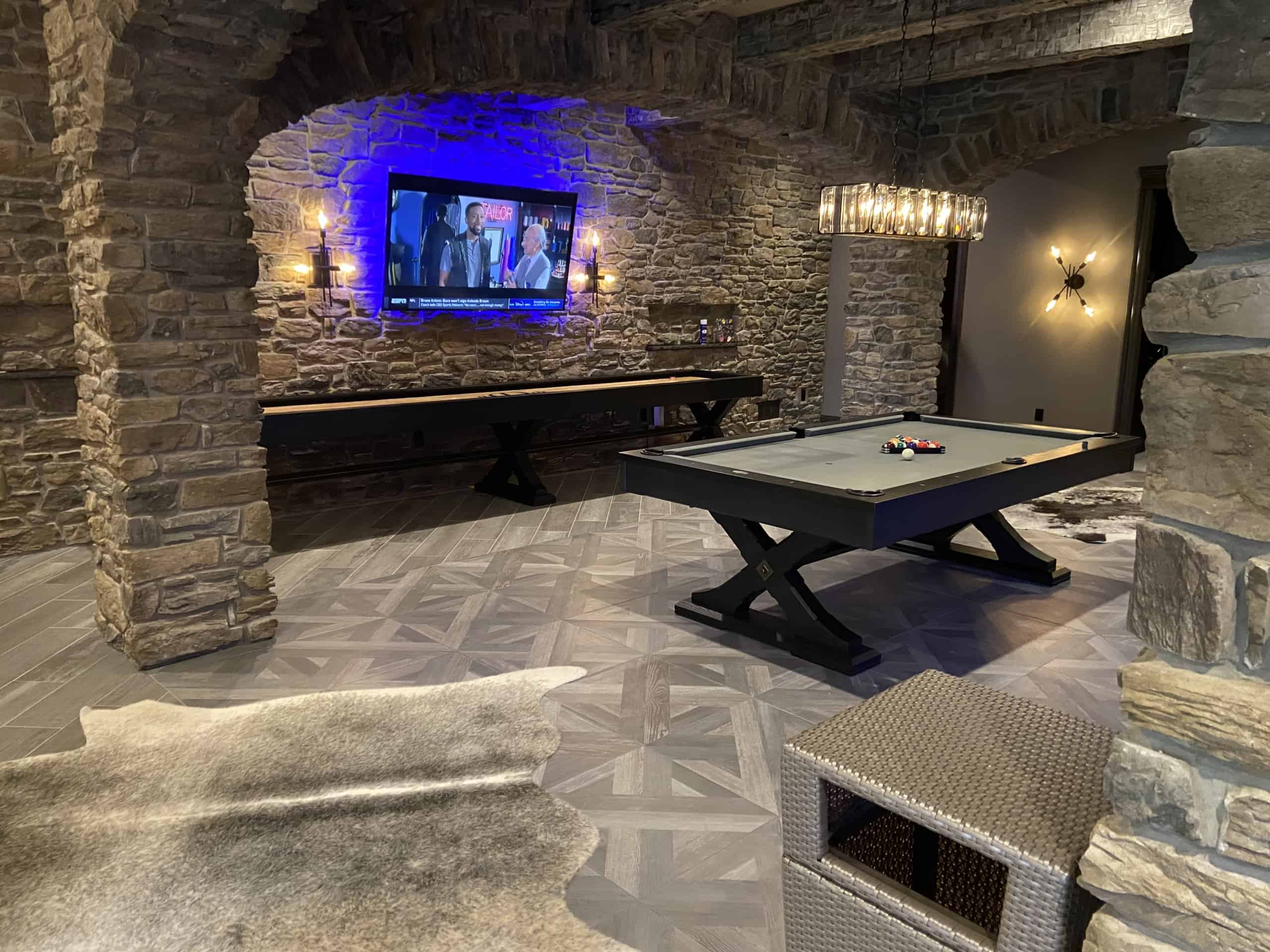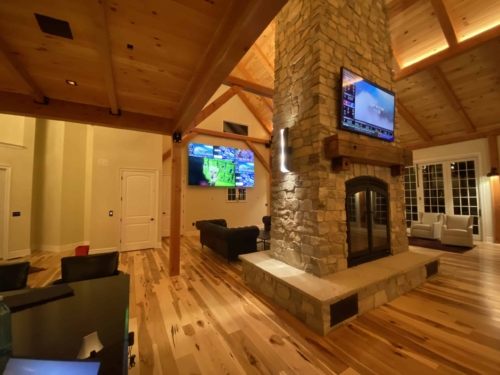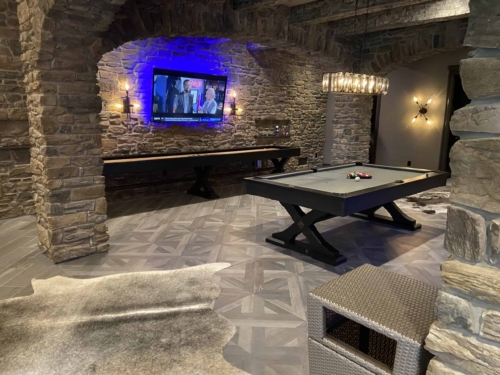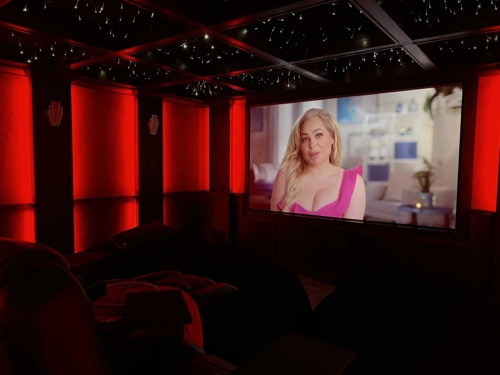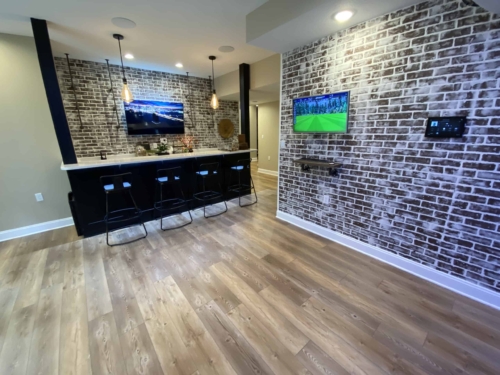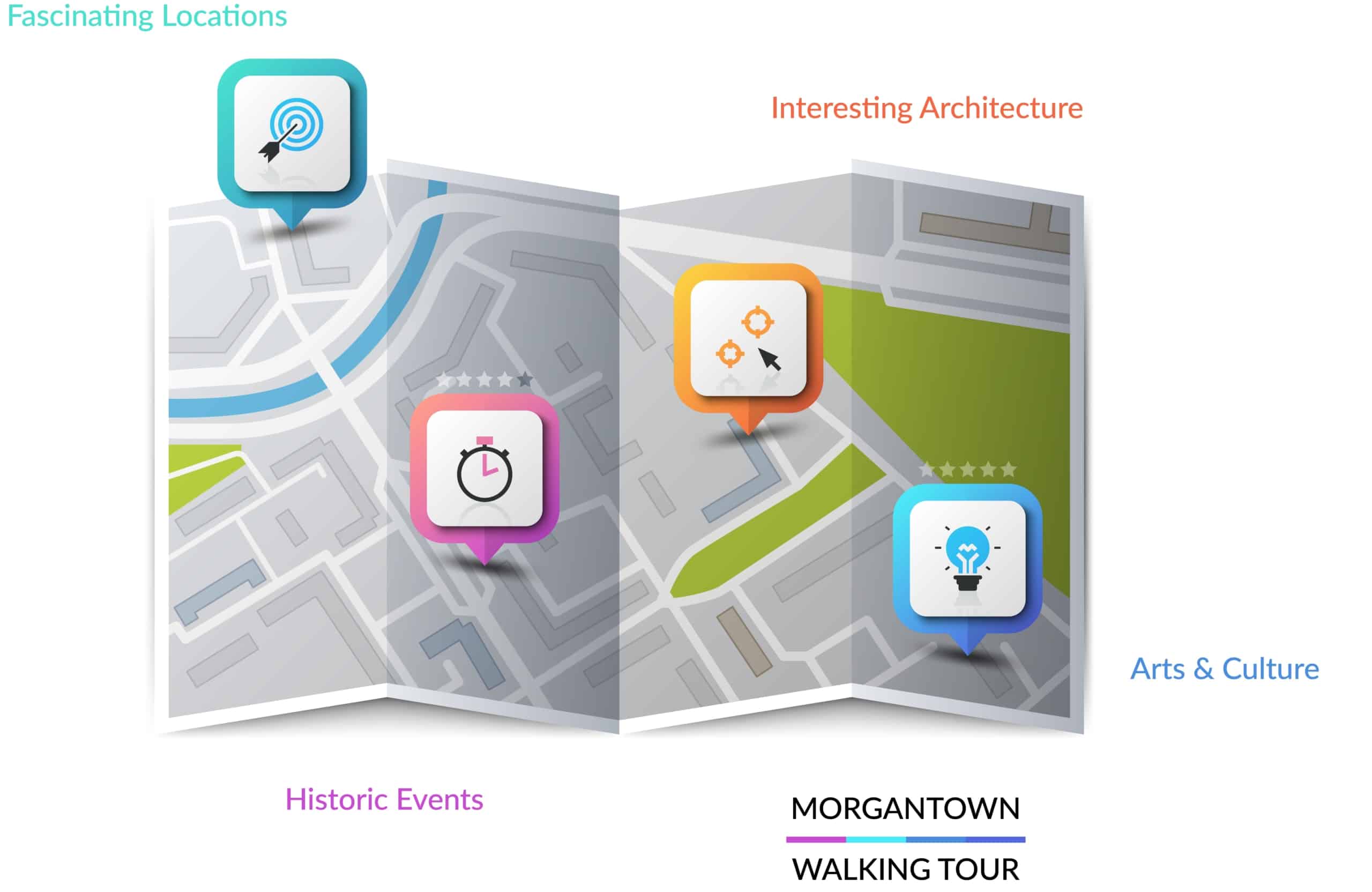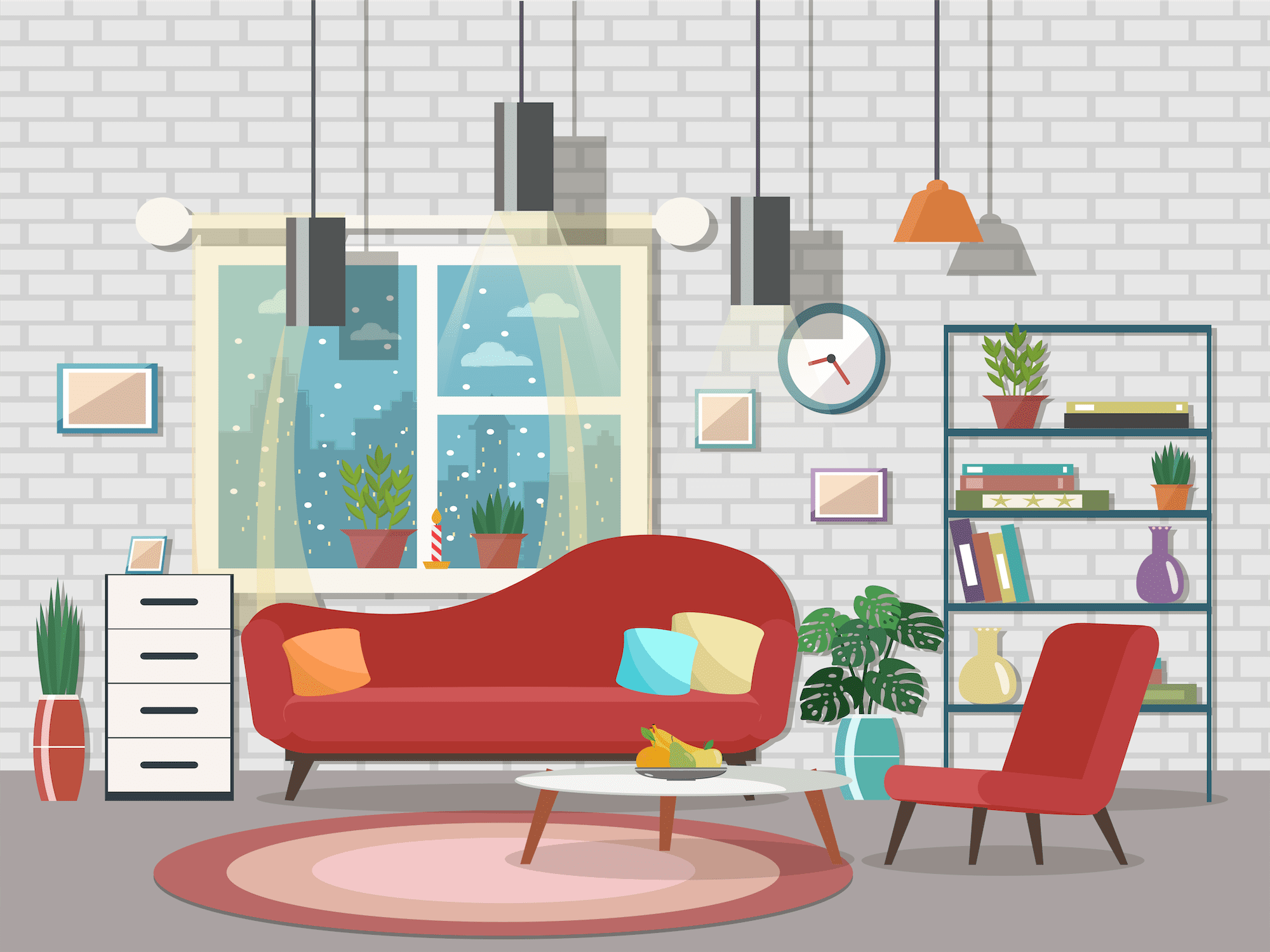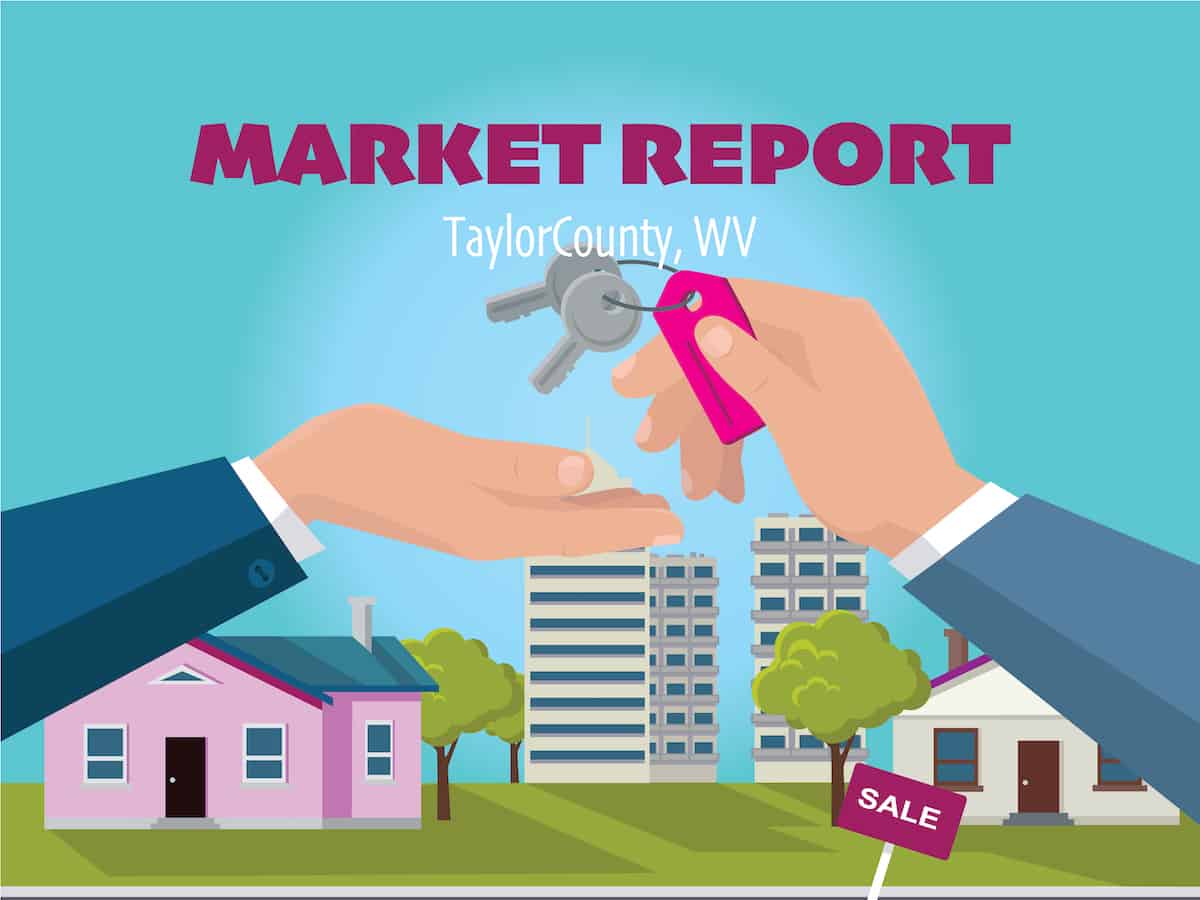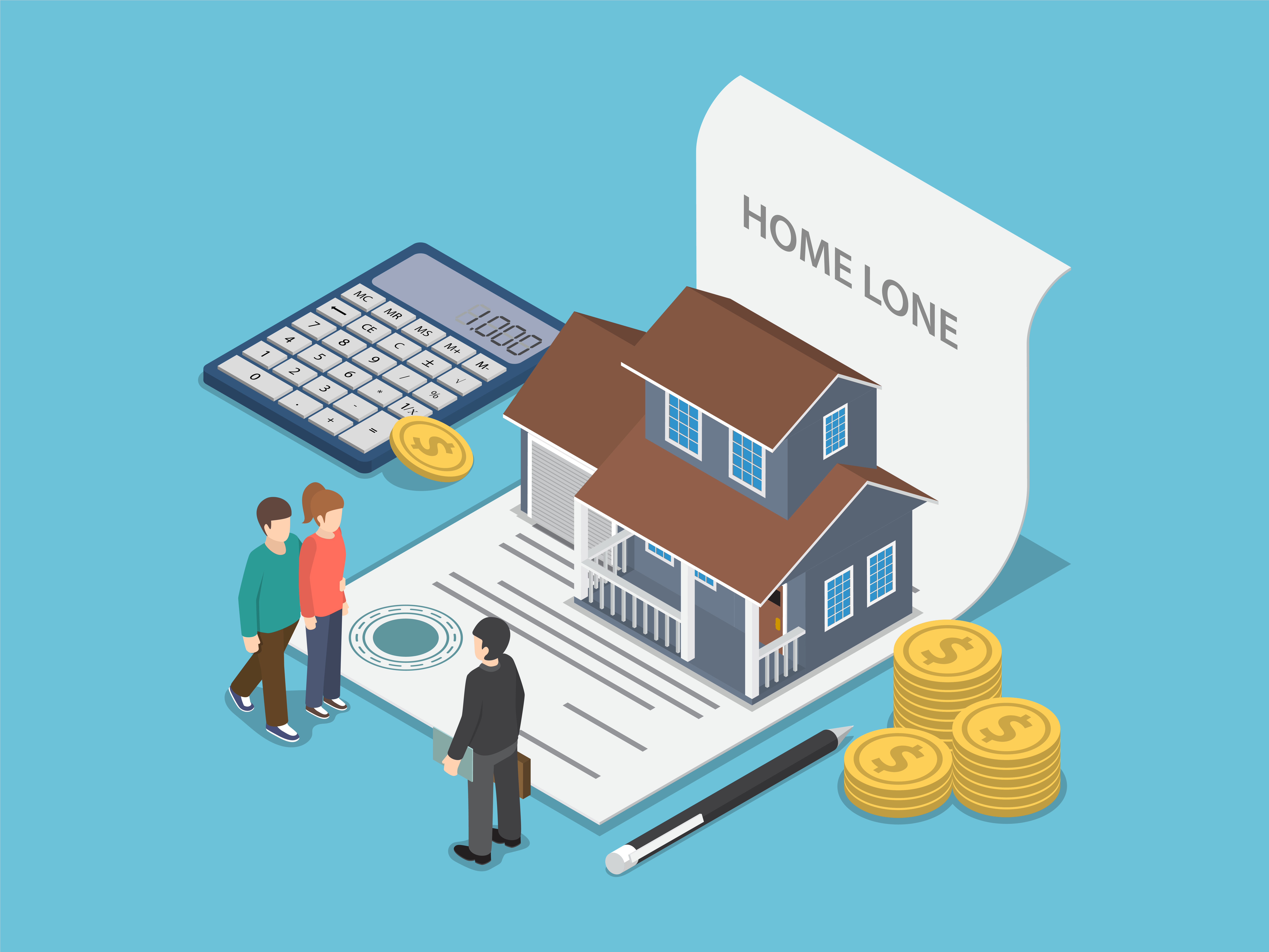Get Smart! Intelligent Connectivity Options for Luxury Homes
The latest smart device management options improve home entertainment experiences, increase home security, and might even lower your insurance premiums.
Fifty years ago, if you asked the average American what makes a great home entertainment system, they might have answered a record player, 8-track tape player, AM/FM radio, and speakers—big ones! If that sounds more like a vintage stereo system, it's because the concept of an integrated home entertainment center was not really a thing in 1972.
In fact, when actor Michael Caine predicted that movies would soon be viewed using a small device attached to the back of your TV, he was describing the first "home entertainment systems."i What Caine didn't anticipate was that TV remotes would migrate to our phones—then evolve into a platform to help us manage an integrated system of connected devices that do far more than entertain.
Of course, for those of us who struggled to hook up our first VCR, navigating an integrated smart home can be intimidating. Luckily, we don't have to go it alone.
To learn more about how to get the most out of our smart home options, we spoke with Chris Mahdavi at Morgantown's Tony's Street Dreamz.
Throw away your remotes!
For professionals like Chris, user friendliness across all devices drives the best designs.
"Having the best TV and audio system looks cool," Chris explains. "It's even cooler when it functions correctly. That's why we use a control system with all our clients."
Chris recommends Control4, an app that lets users manage all their devices from their cell phones. Plus, it does more than combine our remotes. Users can see and control the status of a full system of home devices, even when they aren't home.
"Basically," Chris explains, "one app will control the entire house. Control4 integrates your audio and video components, and gives you full control of lighting, thermostats, security alarms, surveillance systems, door locks, and automatic garage doors."
Chris adds that the app's uses are endless because it can utilize third party options that allow for integration with devices from companies like Amazon.
"As you walk in the door and say the Alexa command, the entire house turns itself on, with specific options depending on the time of day. We can program custom functions, too, like one that triggers other commands based off an event, while alerting the homeowner, if needed."
Morgantown goes modern—with managed home networks
Chris says a lot of Morgantown homeowners are excited about installing a managed home network. But, what does that mean? Chris explains, "We no longer just have our personal devices like phones and computers on the house network. Now, everything from dishwashers to windows can be connected."
Unfortunately, the modem-router combo your local internet service provides can't handle all these connections.
"This is the reason we install a managed network," Chris says. "Our router can handle more than 500 devices at once. Every device with a hardwired connection is wired into the ethernet switch, and most importantly, we can install wired Access Points to seamlessly cover the entire house with WiFi. This is crucial for the control system because it relies on a solid network."
What does this mean for home entertainment?
"With streaming services removing cable boxes," says Chris, "users rely on their home network more than ever. We just completed a residence that had 180 devices on the network. There is no way the ISP's modem-router combo could handle that amount of traffic."
Of course, for modern homeowners, network downtime isn't just inconvenient, it means the home no longer functions properly.
"When the entire house relies on the control system and network," Chris explains, "zero downtime is a must! Each home device we install comes with embedded software that allows us to control it remotely. We also install IP-controlled surge protectors inside the system rack so we can independently power-cycle each device. With routine updates, your system stays fresh and up to date."
Beyond the big screen
Asked what extras are hot in the Morgantown housing market right now, Chris cited remote-controlled LED lighting and automated shades.
When it comes to lighting, control is key. As Chris explains, "Lighting becomes magical when perfect levels are set. LED creates another layer with accent lighting. The control system allows us to program bright, dim, and on/off scenes. It doesn't matter who presses the button, the mood is set."
"Automated shades attract homeowners for multiple reasons," he continues. "The first is appearance. With new construction, we can build the shades into the crown molding, so they're completely hidden. The second is automation. Through the control system, we can program the shades to drop or raise based on the time of day or weather conditions. This maintains the desired temperature of the house without overworking the heating, cooling, and ventilation system."
Compare systems to find the best fit
Chris advises against installing a Nutone Intercom and Audio System. He says, "The base is usually in the kitchen, and each room has a small speaker. We find ourselves removing them at least 3 to 4 times a year. The existing wire required for the system isn't unusable, and the holes left behind are huge. It's a bad design and super ugly."
What's the alternative, then? How about more control and adding facetime? Chris says, "Installing touch screens through the control system replaces this tech while allowing the user to control the house. Video chat between rooms or from the front door are accessible from the screens."
The frontier outside your door
Chris says Morgantown homeowners are also ready to take new tech outside.
"Outdoor living areas are becoming more popular," he says. "Almost one quarter of our TV sales now are outdoor TVs. We're also installing speakers and lighting in the landscaping around the house. This allows sound to be distributed equally outside, so you won't upset your neighbors when you're enjoying music. The lighting we use is RGB plus Tunable White. By using the control system, we can set the lighting to different hues based on the time of year—think orange at Halloween or red, white, and blue on Independence Day—or make a simple switch from vibrant light to a warmer white."
Pocket a return on your investment
Installing or upgrading a smart home system isn't a sunk cost, it's an investment. Not only can it increase the resale value of your home, but you might lower homeowner's insurance premiums by 10% or more!
According to Pat Howard at Policygenius, properly installed video doorbells, home security cameras, and smart thermostats can lower your annual payment. So can devices that monitor doors and windows and sense water leaks, carbon dioxide emissions, smoke, and extreme temperature changes.
In terms of increasing your home's value, Chris recommends investing in structured wiring.
"If done correctly, your house can be prepared for automated shades, distributed audio, wired security and surveillance, home network, home theater, and conduit to certain areas of the house for future runs if and when wiring changes."
Even if you don't install every smart option today (it seems every year there's a new device), structured wiring ensures you're set up to deploy devices in the future with minimal disruption.
Chris says a lot of his clients ask whether they really need structured wiring, or if they can go wireless. He says there are multiple reasons why wireless won't always work.
"First, anything wireless still requires power, so if you don't have power in that location, wireless is no good. Second, every device's radio signal is different. When you start combining devices, you create a radio nightmare. However, if we wire each capable device into the network and only use our phones, tablets, and laptops on the WiFi, wireless becomes more reliable, and we aren't living in a radio transmission jungle."
Flip the switch to get smart
The bottom line is that smart devices are here to stay, and robot vacuums, smart power strips, and intelligent ovens are just the beginning. As the latest products reveal, their ease of use, reliability, and performance levels have advanced to the point where smart devices truly are the smartest option.

